But according to the Australian Bureau of Statistics (ABS), that has reversed with 67 per cent of Australians now living in capital cities.
ABS mid-range projections show the population of Sydney and Melbourne almost doubling by 2066, with both reaching close to 10 million people while regional areas experience far more modest growth.
An Infrastructure Australia audit predicts the nation’s two biggest cities will be paralysed with congestion by 2031, with the cost of lost productivity due to gridlock set to double over the next 12 years to $38.8 billion.
But what if regional cities accommodated more of that growth, while also receiving improved infrastructure and services?
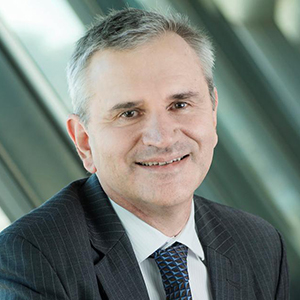
UniSA Business School Dean of Research and Innovation, Professor Andrew Beer, says there’s a strong economic case.
“When regional cities grow, the entire state’s economy grows whereas when capital cities grow, you do not see that same widespread impact,” Prof Beer says.
According to OECD data, the countries with the best economic growth were those where all their regions were growing, not just major cities.
Infrastructure Australia found that infrastructure is being stretched on the urban fringes of Sydney, Melbourne, Brisbane and Perth – where the majority of the country’s population growth is occurring.
“That’s an increasingly enormous cost to the public purse,” Prof Beer says. “At the moment about 85 per cent of immigrants choose to live in a capital city, particularly Sydney or Melbourne. If we can redirect them into smaller cities and provide appealing job opportunities in those places, we can reverse those trends.
"What we know without any doubt is that people move to employment, so we need to create job opportunities, in part through appropriate public sector investment to enable that growth.”
In a joint UniSA-Regional Australia Institute project, researchers found many workers living in the outer suburbs of Sydney, Melbourne, Brisbane and Perth would be financially better off if they moved to regional Australia. Many home owners in state capitals are paying double the mortgage of their regional city counterparts but have similar wages.
“High housing costs in Australia’s capital cities are an impediment to growth,” Prof Beer says. “We are seeing that regional and smaller city growth creates a better environment to raise the next generations of Australians.”
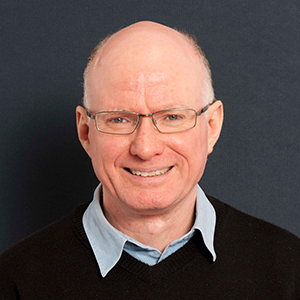
Although about two-thirds of Australia’s export earnings come from regional industries including agriculture, tourism, services and manufacturing.UniSA Program Director for Urban and Regional Planning Dr Andrew Allan says there are reasons why Australia’s rural and regional population has declined since 1911.
“If you look at primary production and agriculture, we are very efficient – you don’t need many people in the region for some industries,” Dr Allan says. “That leads to problems attracting more people, because you don’t have the critical mass needed for facilities and services.
“Sometimes you need the government to fund base infrastructure to enable growth.
“Local councils do the best they can and regional councils have to take on more responsibilities than city councils, such as water supply, but they have a much smaller tax base.
“The cost of infrastructure is often too high, so you really need state government to come in and say that we want this region to grow, and to invest accordingly.
“Almost every part of South Australia has a regional strategy that indicates where investment needs to be made. If investors can see there’s a plan, they will have more confidence. South Australia has done the right thing with policy but it has been a bit more circumspect with funding. The bulk of the population lives in Adelaide, so that’s where the bulk of the money goes. The government tends to be focused on economic return rather than population growth, and that’s a challenge right across Australia.”
One of the biggest risks for regional cities is relying heavily on one industry. South Australia’s second biggest regional city, Whyalla on the Eyre Peninsula, is a case in point.
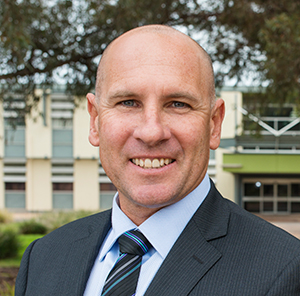
Paul Havelberg, regional manager for UniSA’s Whyalla campus, has lived in the city since 1997.
“I’ve seen Whyalla during the mining boom – house prices were extraordinarily high, rental accommodation was in very high demand – there was a lot of positivity and a lot of wealth being created,” Havelberg says. “And then post the global financial crisis and the end of the mining boom, Whyalla was hit … families were having to leave. And when the steelworks went into administration in 2016, Whyalla was teetering on the edge.
“One-in-four jobs are related to the steelworks and mining and that is a key reason for Whyalla and the region to diversify.”
British-based industrialist Sanjeev Gupta bought the steelworks in 2017 and Whyalla’s prospects are now on the up and up. Gupta’s company, GFG Alliance, is building a new structural rolling mill to increase steel production to 1.8 million tonnes a year and planning a $350 million solar energy project.
“There’s been a cautious but optimistic view that the future of Whyalla is secure,” Havelberg says.
Prof Beer says although the success of any city is never guaranteed, the plans for Whyalla appear sound.
“The investment in Whyalla is going into increasing its productive capacity,” he says. “It’s investment that will create both direct and indirect jobs. Gupta’s investment is economically linked to global production networks and markets.
“Gupta has built a business model based on the economic potential of taking abandoned assets and applying a 21st century business model for increased productivity.”
Prof Beer says successful regional cities tend to specialise take advantage of natural assets – whether that be natural resources including land, their geography, tourism drawcards or features such as a harbour.
"Places that specialise are on average more likely to grow,” he says. “It’s about having an available workforce with the underlying skill sets to sustain growth.”

UniSA Associate Professor in Enterprise Dynamics, Allan O’Connor, says clusters of related businesses provide a strong economic foundation.
“But you really want the seeds of diversity in that cluster as well – otherwise you have all your eggs in one basket,” he says. “In the Barossa, the strength of the wine industry is great but overlay climate change and the effect on that sector in that place could be devastating. There is a lesson in the story of Detroit, USA, which was once a car making capital but it was decimated by the collapse of that industry under the weight of global pressures. That’s the risk of being a one-trick pony.”
And that’s where small and medium businesses come in.
“Small and medium enterprises are agile, nimble and tend to be hungry to survive,” Assoc Prof O’Connor says. “You need quite a few of these companies to knit together to create the base and diversity of an economy.”
Dr Allan says Sanjeev Gupta’s plans have injected confidence into the region.
“Once you start getting significant investment in supply industries, you get a snowball effect … for every $1 spent you get $1.70 in return investment, a multiplier effect in regional areas, as services grow or come to the area,” he says.
“If the population is big enough, you’ll get mid-range firms interested in setting up there and certain industries will come in.”
Dr Allan says both Whyalla and Mount Gambier will be able to offer affordable, green energy, through solar (Whyalla) and wind (Mount Gambier).
“If you have access to affordable energy, you can underpin so many activities,” he says. “Cheap, affordable, clean energy can be a major drawcard for business, but you also have to make that community an appealing place to live.
“You need to have good housing options, schools, hospitals – making sure you have all the lifestyle attributes people want.”
Both cities also benefit from having their own university campuses, giving people in the region the opportunity to stay and gain a degree locally, and providing industry access to researchers and skilled graduates. Data shows students who study at one of UniSA’s regional campuses are likely to stay and work locally, often taking on leadership roles with their future employers.
Havelberg says Whyalla City Council is working hard to promote the city as both a place to visit, and to live.
“We have a very laidback lifestyle … it’s a great place to bring up young families, is close to the ocean, the Outback and the Flinders Ranges. If you are into the great outdoors, it’s one of the best places to live.
“The city council is focused on diversifying the local economy through developing the tourism sector, different types of industry and exploring ways to improve infrastructure that will underpin the liveability aspects of Whyalla.”
UniSA has recently opened a new Innovation and Collaboration Centre (ICC) in Whyalla to help innovative startups. They will have access to educational workshops combined with fast gigabit network speeds and expert mentors.
"So UniSA in Whyalla is now a place where entrepreneurs, people with great ideas, can access support to turn their ideas into a global business – that’s a really exciting development,” Havelberg says.
Assoc Prof O’Connor says it’s an example of the types of building blocks regional cities should look to assemble, as part of a portfolio of initiatives.
“The ICC and other types of incubators are really important,” he says. “They support entrepreneurship and raise human capital (upskilling people).”
Prof Beer says the key is for federal and state governments to empower local organisations to make key decisions about their futures, providing opportunities to train locals or attract skilled workers.
“You’ve got to give these places power to shape their own future,” he says. “Regional development agencies, councils and chambers of commerce, will see the need for skill creation and take action to skill up the labour force. You might have a mix of plans to train existing people and plans to subsidise accommodation to attract new people, which is easy if you have people on the ground talking to businesses about what they need, rather than people based far away in Canberra.
“Australia already has a system of Regional Development Australia committees, which on average do a good job, but they could always have more resources and be better integrated into local communities. It’s about working more closely with local government and having greater freedom to invest in initiatives, which are often designed in Canberra.”
There’s also an important role for marketing and promotion. Migrants perceive metropolitan areas as presenting a higher likelihood of finding compatriots and better access to employment, as well as education and health services.
Seven of NSW’s regional cities – Albury, Armidale, Bathurst, Dubbo, Orange, Tamworth and Wagga Wagga – united to form “Evocities”.
The campaign aims to change perceptions of life in a regional city and encourage people to live, work and invest in an Evocity. It showcases the abundance of opportunities in the Evocities due to their lower cost of living, strong career and business opportunities and enhanced lifestyle.
“A lot of their work is focused on promotional activity – making people aware of the job opportunities, reporting positive outcomes,” Prof Beer says. “Many people want to leave major urban centres and if there are jobs for them there, they’ll take them.”
Dr Allan says South Australia’s biggest regional city, Mount Gambier, equidistant from Melbourne and Adelaide, also has huge potential.
“With the right transport infrastructure, the city could grow considerably,” he says. “It has significant tourism potential, with attractions including the Blue Lake, Umpherston Sinkhole and proximity to the Coonawarra. It has fantastic tourism assets.”
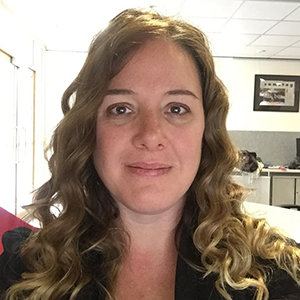
And innovative ideas focused on the wide range of creative industries also have potential to grow tourism and build strength in regional communities according to UniSA Associate Professor Jodie George from the School of Creative Industries.
“Successful tourism ventures need to be inclusive,” she says. “The idea that people can come to your place and feel a part of things – that’s a beautiful thing and that’s something tourism can offer. They can use those unique moments that happen in their particular place to say: ‘come see us, come see what we do and who we are’.”
She says community consultation is the best way to ensure a range of local voices are reflected – otherwise the visitor experience won’t live up to expectations and will ultimately fail.
"You can have great marketing and a great brand but if the people in that community don’t embody what’s being marketed, it’s hollow,” she says.
She says the increasing emphasis on sustainability and avoiding the carbon impact of jet travel, presents exciting opportunities for regional towns and cities to develop attractions such as paddock-to-plate dining experiences.
“There’s a renewed sense of what is in our own backyards and not wanting to have a high impact carbon footprint on the planet,” she says. “Tourism presents opportunities to turn social movements into experiences and to breathe life into regional communities.”
FIND OUT MORE | Innovation & Collaboration Centre
IMAGE | Ockert le Roux photography
Ways to ensure a regional city grows
- Public investment to underpin employment growth, such as telecommunications infrastructure (NBN) and transport connections.
- Create employment opportunities. People will go where high-quality jobs are available.
- Undertake robust planning about human resources. In many areas there will be people with suitable skills available, but industry and government may need to invest in upskilling the local workforce through trade skills and apprenticeships or higher education. Alternatively, it could be better to attract skilled people to the area.
- Develop a specialised economy. Places that develop a specialised economy are more likely to grow than places that don’t, leading to a more skilled workforce and a reputation for that industry – it could be in tourism or agribusiness. As the workforce becomes more skilled, average incomes rise, making it more attractive.
- Engage in place branding / marketing – promote the benefits of living and working in the region.
- Research over the past 30 years shows the most important thing is to give regional cities power to shape their own destinies and capitalise on their natural assets, with a level of devolved autonomy and funding.
 Image courtesy RDAWEP and Pinch Design
Image courtesy RDAWEP and Pinch Design
THE APPEAL OF REGIONAL LIVING
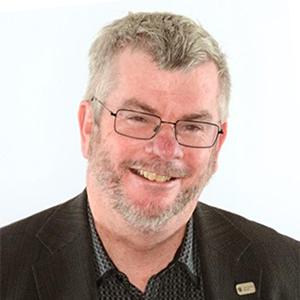
Regional Manager of UniSA’s Mount Gambier campus, Ian McKay, has lived in regional cities his whole life, and says their benefits are often underappreciated by people who’ve never experienced regional living.
“People often don’t know what a great lifestyle regional Australia has to offer,” McKay says. “The Limestone Coast, for example, has good restaurants and shopping, it’s close to the coast and natural wonders, people are friendly, it has a wonderful sense of community – and it’s a 10-minute drive to wherever you want to go in town.”
Like Whyalla, the city is keen to diversify, expanding beyond its roots in forestry.
“Although forestry will remain a major employer, we’re broadening our economic base by growing the range of industries in the area – and I think most people are optimistic about the city’s future.
“Having a university campus, as well as a TAFE and very good secondary schools, is part of the jigsaw because education is one of the enablers to encourage more people to come here.
“And students who come to regional centres for a placement invariably love the experience – it encourages them to look at living and working in regional areas.”
He says local councils in the Limestone Coast work really well with each other and in collaboration with agencies such as Regional Development Australia, the State Government’s primary industries economic development agency PIRSA and UniSA to grow the area’s economy and population.